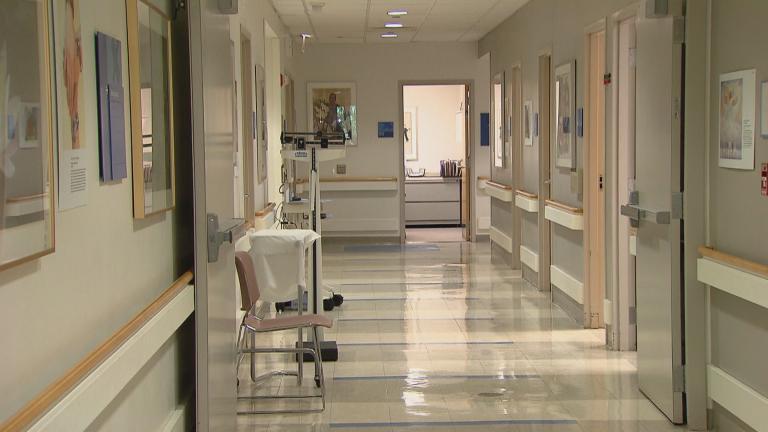For women in the U.S., breast cancer is devastatingly common. One in eight women in America can expect to develop breast cancer over the course of their lifetimes. And for Black women in the U.S., what comes after the diagnosis is especially worrying. The mortality rate for Black women diagnosed with breast cancer is 42% higher than their white counterparts.
“One big reason is access limited to lower-quality resources inside and outside the hospital system,” said Dr. Arlene Richardson, chair of the department of radiology at Jackson Park Hospital. “It contributes significantly to all of these disparities we see in our community. There are many different social determinants of health from economic instability, including unemployment, lower quality environment, including housing and transportation in our community, lower quality and lower level of education, lower access to high quality foods and also lower quality health care assistance in our community.”
In addition to higher mortality rates, a particularly aggressive subtype called triple negative breast cancer is more likely to present itself in Black women.
Dr. Surbhi Warrior, a physician at Rush University Medical Center, says that the science on TNBC is still young. Dr. Warrior took part in a research study that looked at data for over 20 years of breast cancer patients – more than 8000 Chicago women.
“One of the things that we found was that Black women were 1.5 times more likely to present with metastatic disease, meaning that the cancer had already spread to different parts of their body, meaning it was much less curable. But we also found that Black women were 2.1 times more likely to have triple negative breast cancer. And both of these are big areas that lead to higher occurrence and mortality rates and especially for triple negative breast cancer. What that means is that these breast tumors don’t express the hormone receptors of estrogen or progesterone or HER2 protein. And this is what usually breast cancer directed therapies target.”
Dr. Warrior notes that for breast cancer treatment, follow-up care is as critical as the initial diagnosis – but it also presents barriers for many Black women.
“When we did our analysis of why there were a lot of areas where patients weren’t following up, we found out it was due to difficulty with child care and transportation as well as even difficulty getting time off work to go to their doctors’ appointments. And a lot of these competing social and economic demands that patients go through make it difficult for patients who are already presenting with advanced disease to adhere to months and months of chemotherapy and radiation and overall breast cancer care, and this long term impacts their overall mortality and their cancer outcomes directly.”
It’s everyday needs like those that health care organizations must consider in order to improve health outcomes for Black women, says the American Cancer Society’s Michelle Hicks-Turner.
“We know that these disparities are rooted in policies that contributes to the barriers to care. Not everyone can take the time off during the week to go to doctor’s appointments, so offering weekend and evening mammogram appointments are crucial. Also, to ensure uninsured women receive the care they need, hospitals can strengthen their partnerships with faith-based organizations, referring providers and promote the utilization of the Illinois, breast and cervical cancer program. And this would allow low-income women across the state to get care.”
Hicks-Turner adds that services for health care navigation and even child care or transportation can help boost patients’ ability to access health care.
Jackson Park Hospital is collaborating with nonprofits Black Women’s Health Imperative, the National Alliance for Hispanic Health, and medical device company Hologic to bring state of the art 3D mammography equipment to patients for breast screening plus wraparound care services. Dr. Richardson says the initiative, called Project Health Equality, is one way Jackson Park Hospital is trying to address disparities in prevention and treatment for breast cancer.
“3D mammography has proved to be superior when compared with 2D mammography alone is for detecting breast cancer, particularly in dense breast which is more common in the Black and African American community. So in addition to this technology, there’s other support of innovative care including public education and nursing navigation that will be added to our side to improve our screening and treatment for women in our community that might otherwise go without.”
Ultimately, Hicks-Turner’s bottom-line advice to Black women hoping to protect their health is straightforward.
“Go get your mammogram. It’s very important. It saves lives.”








